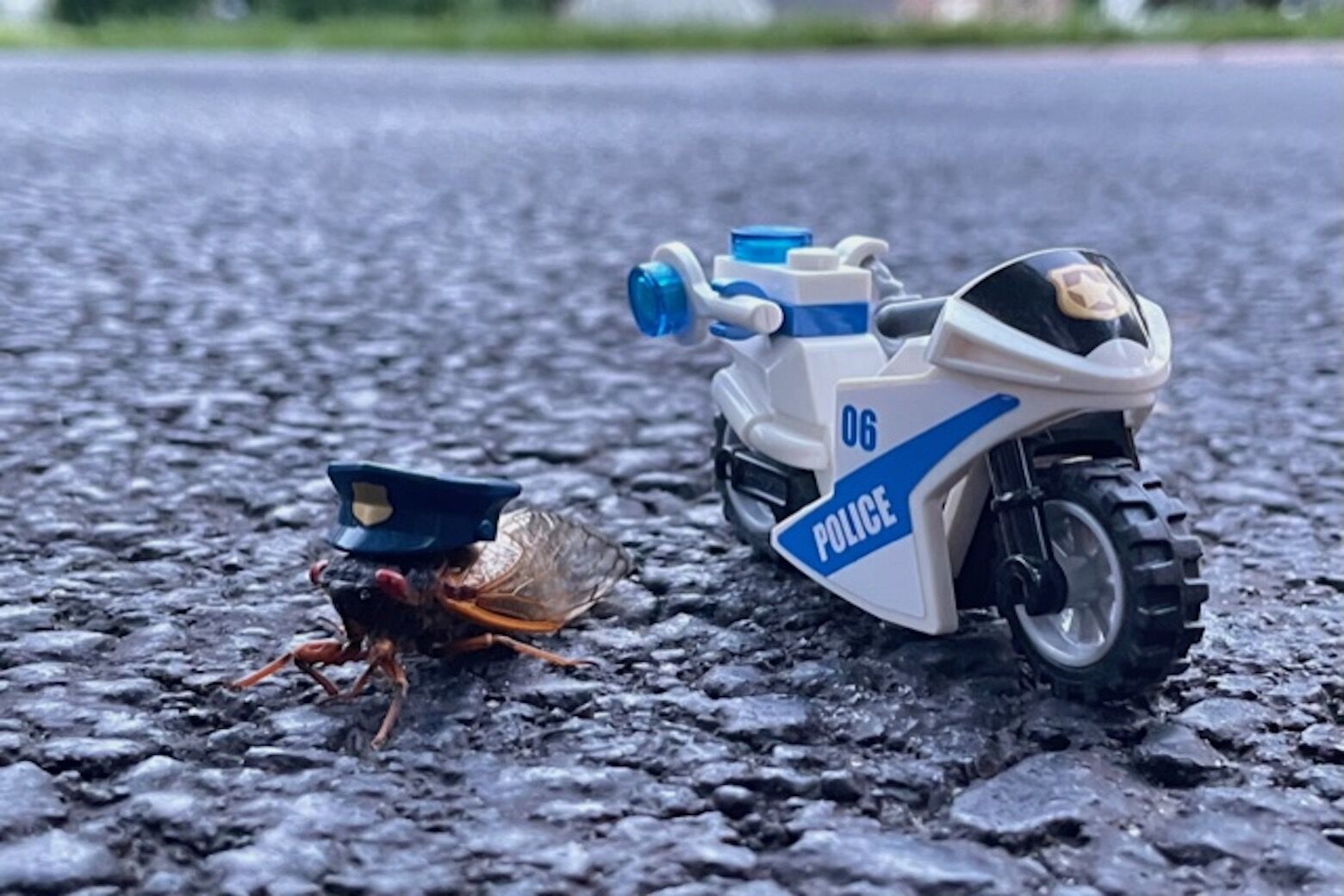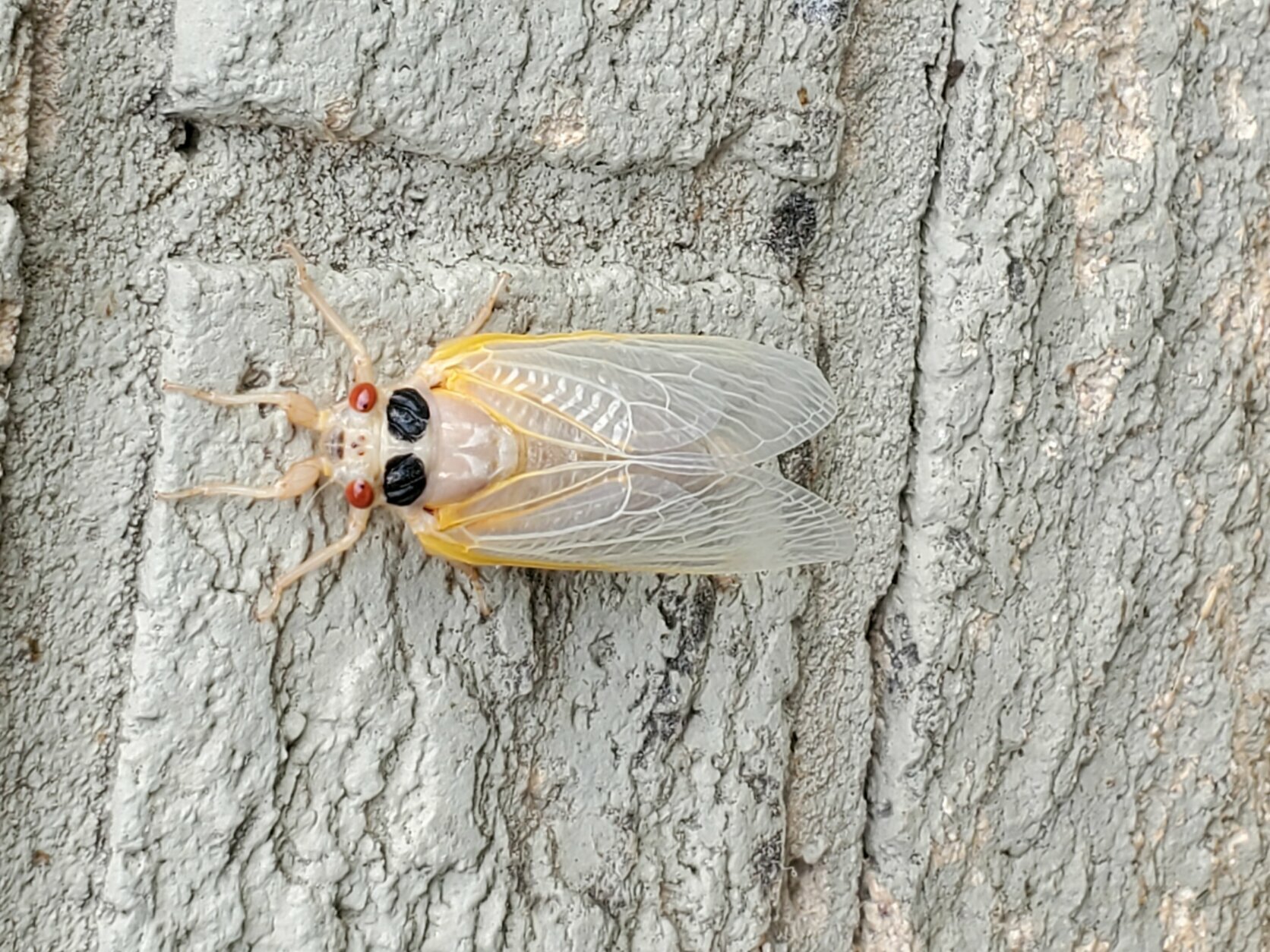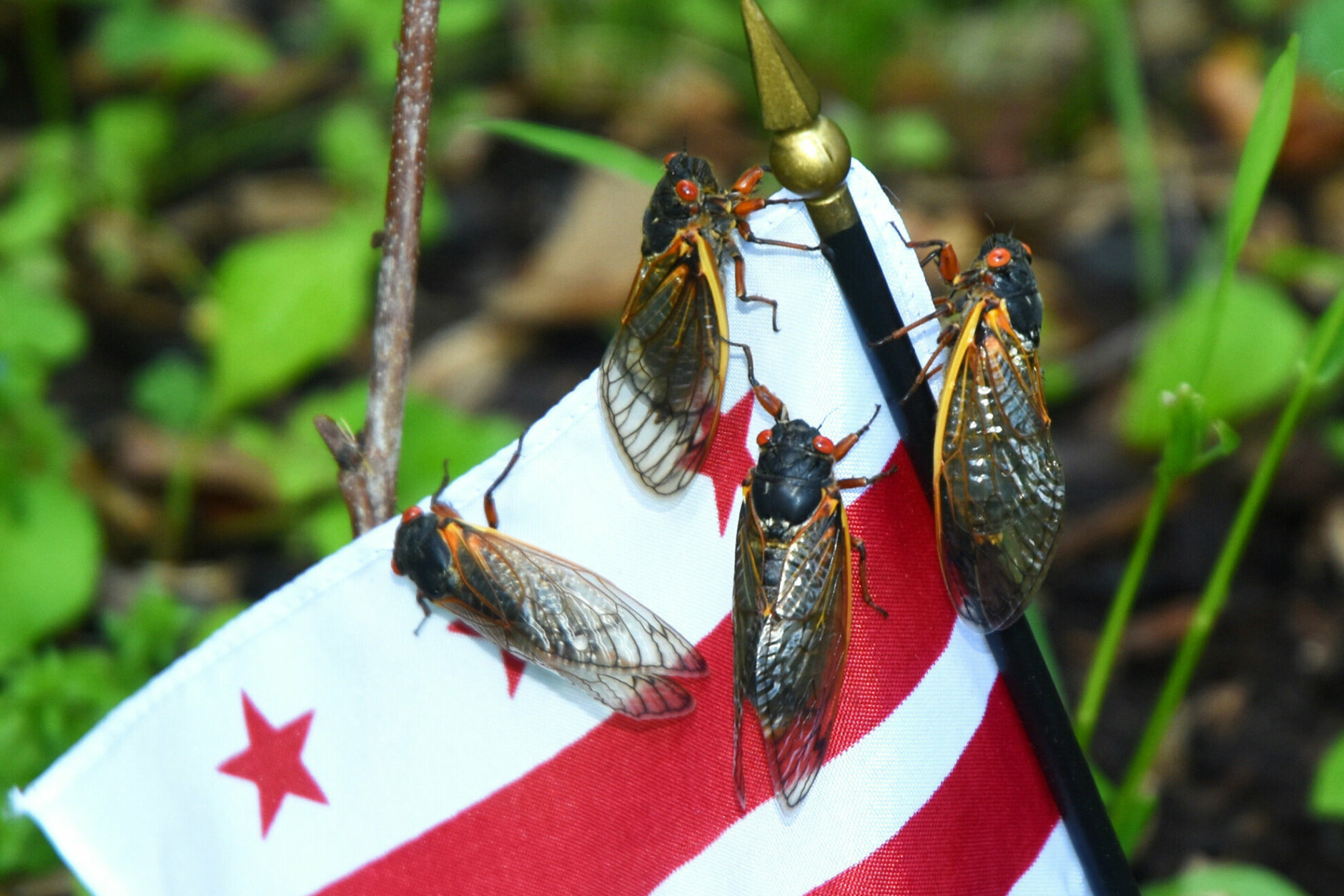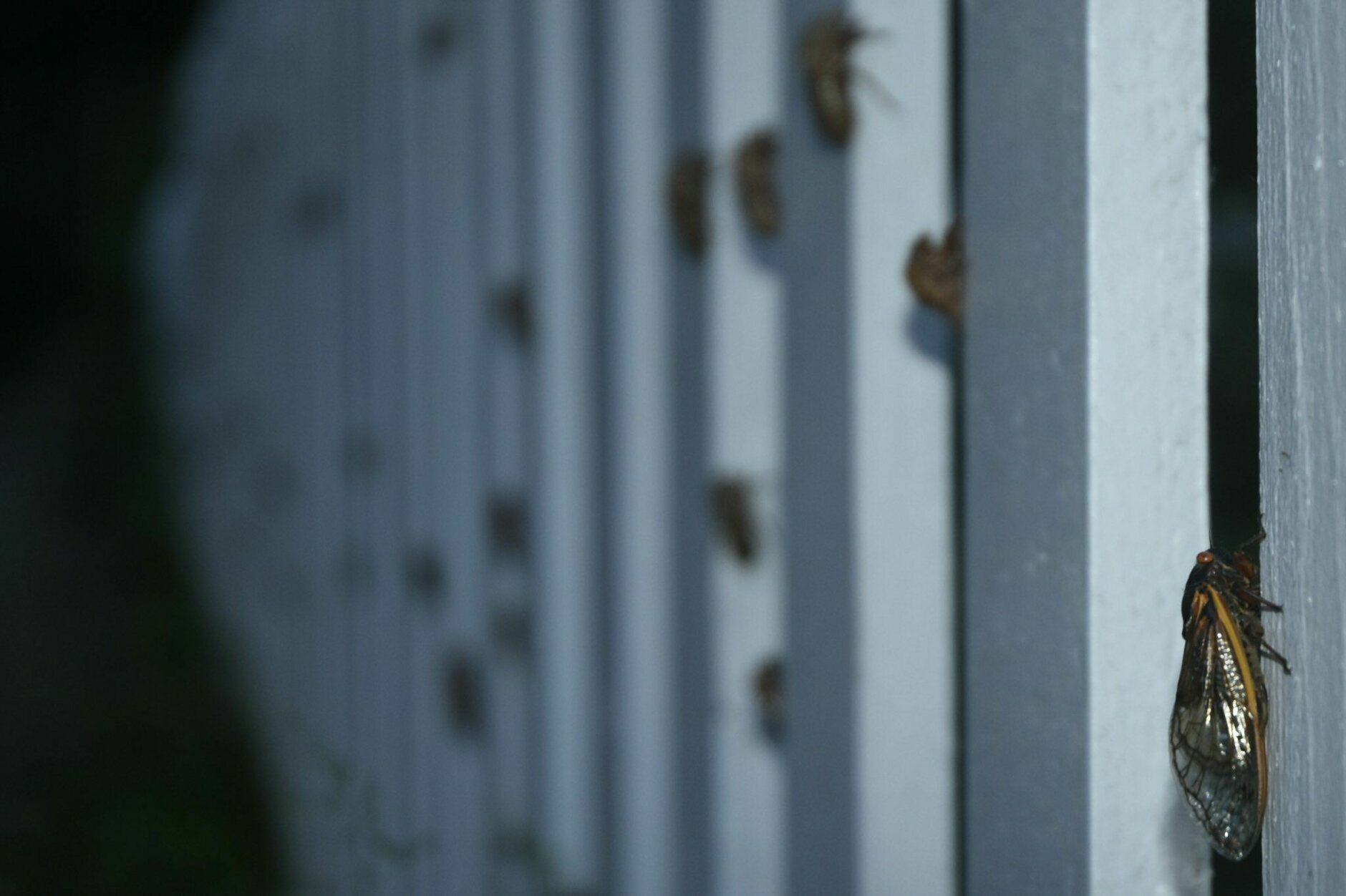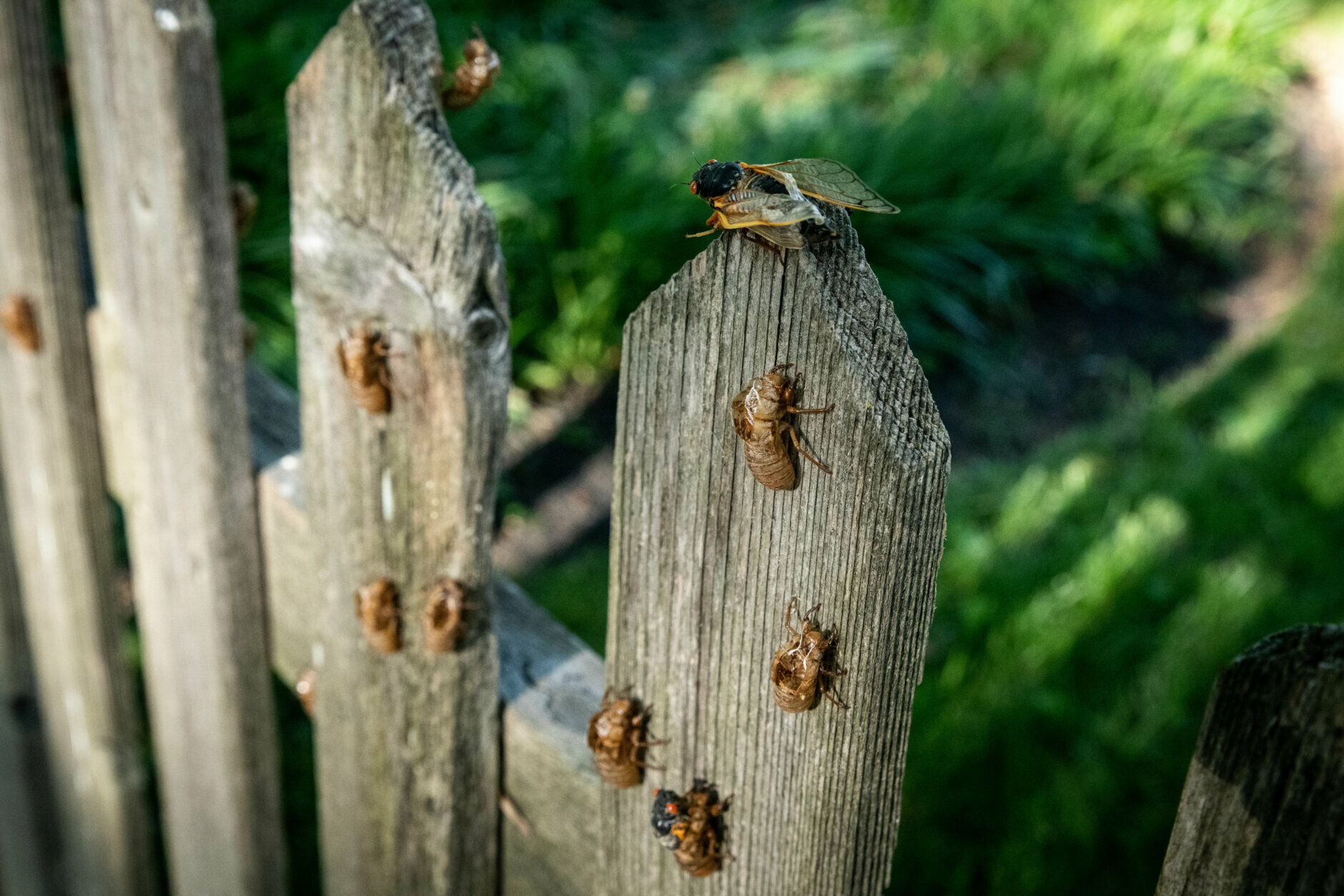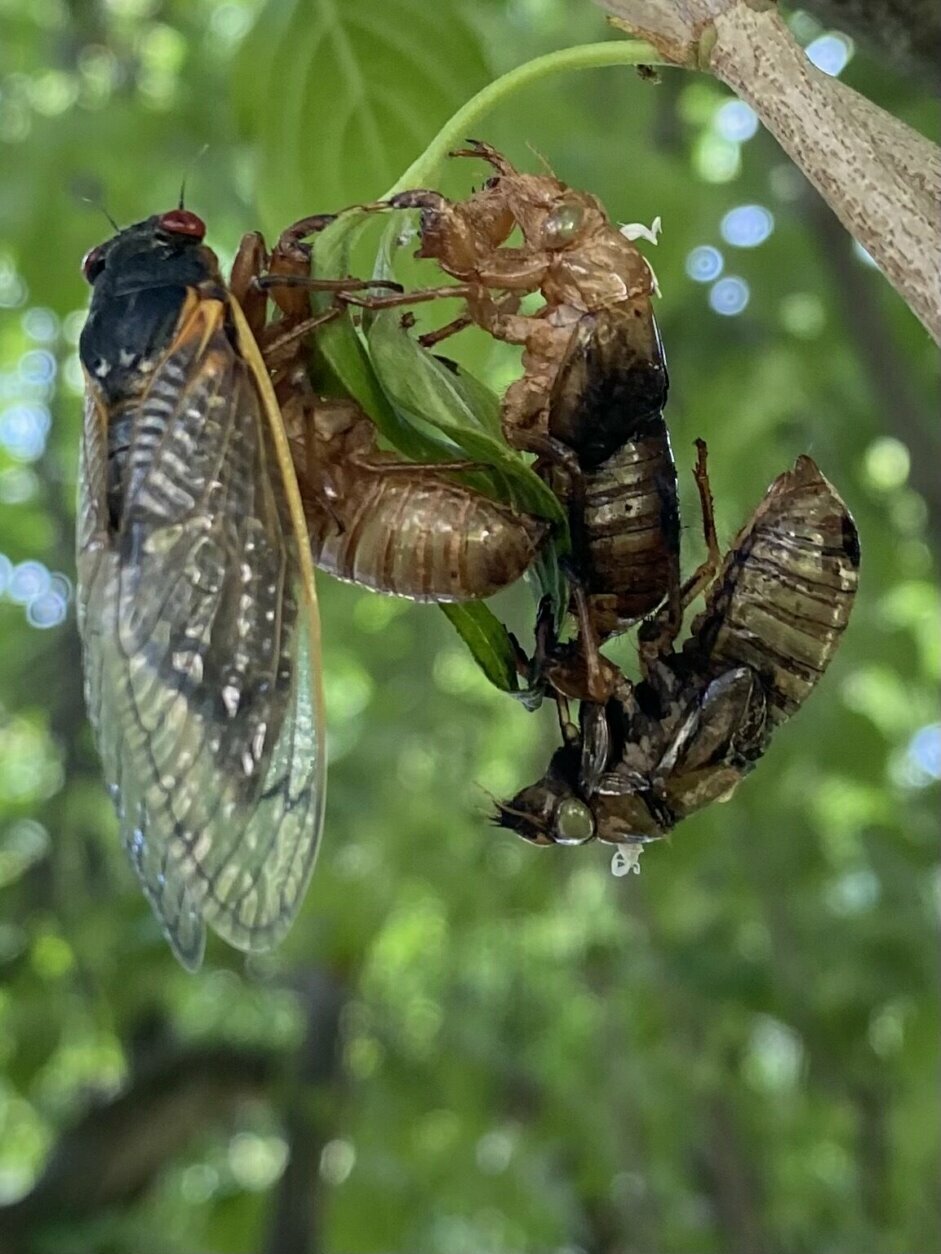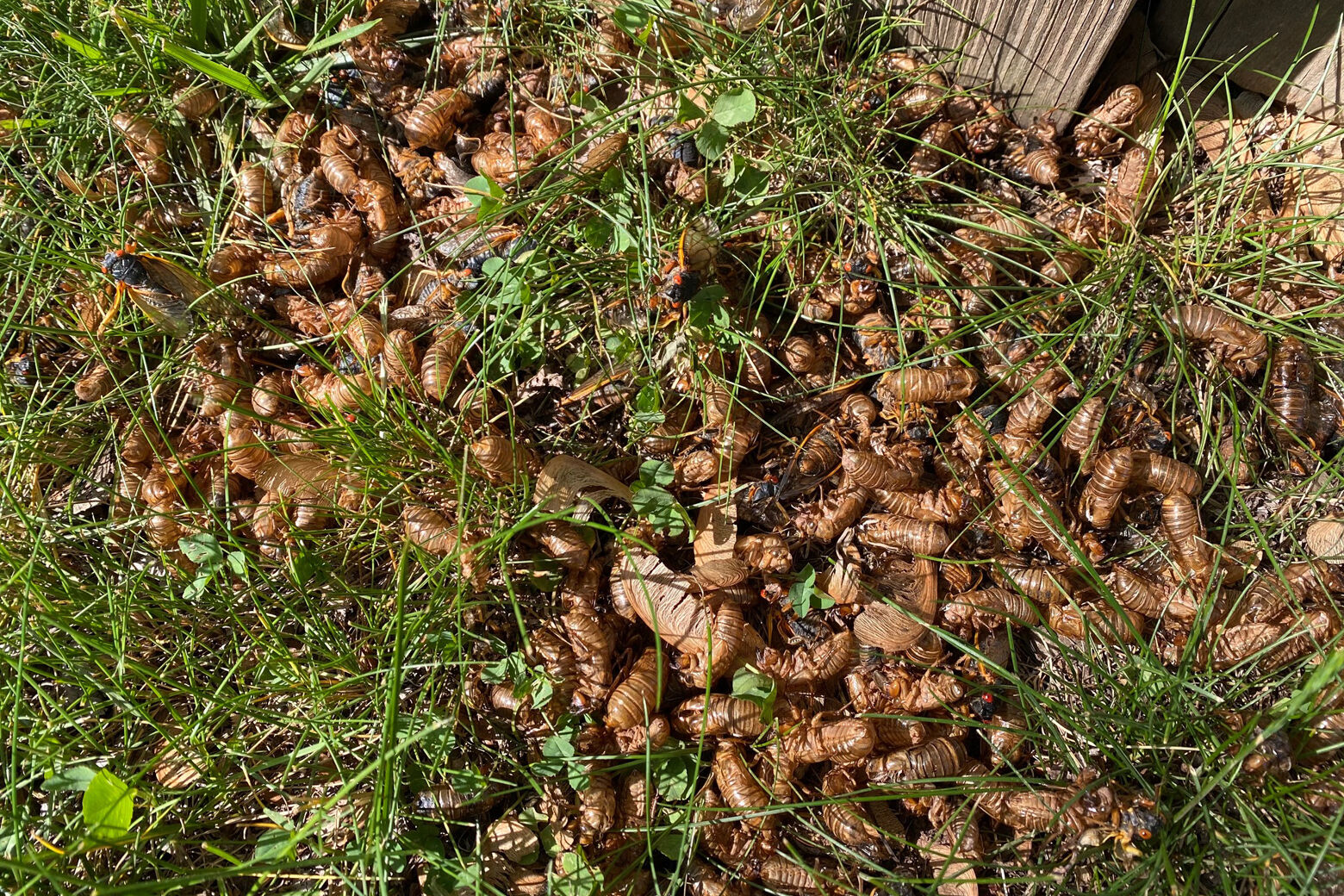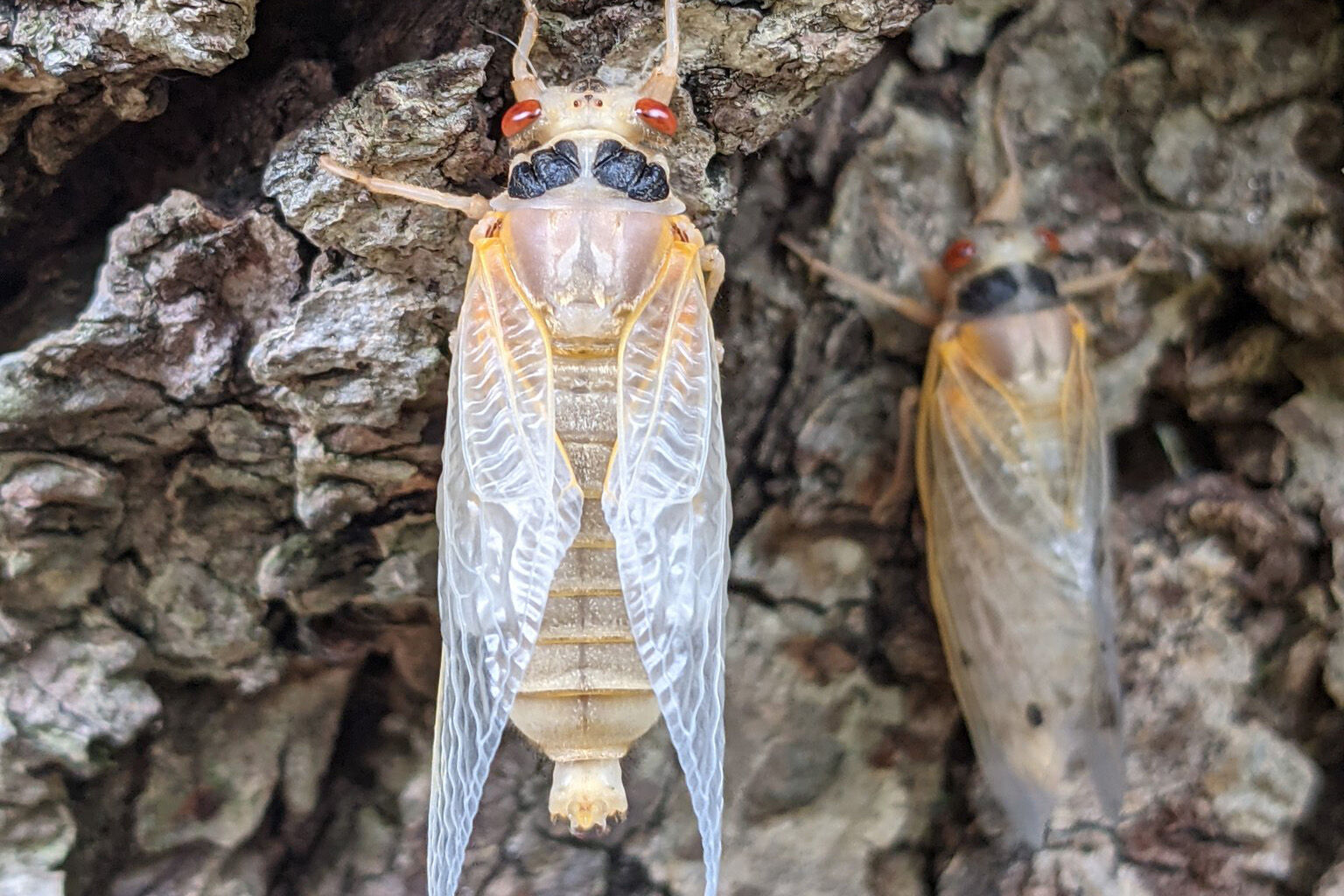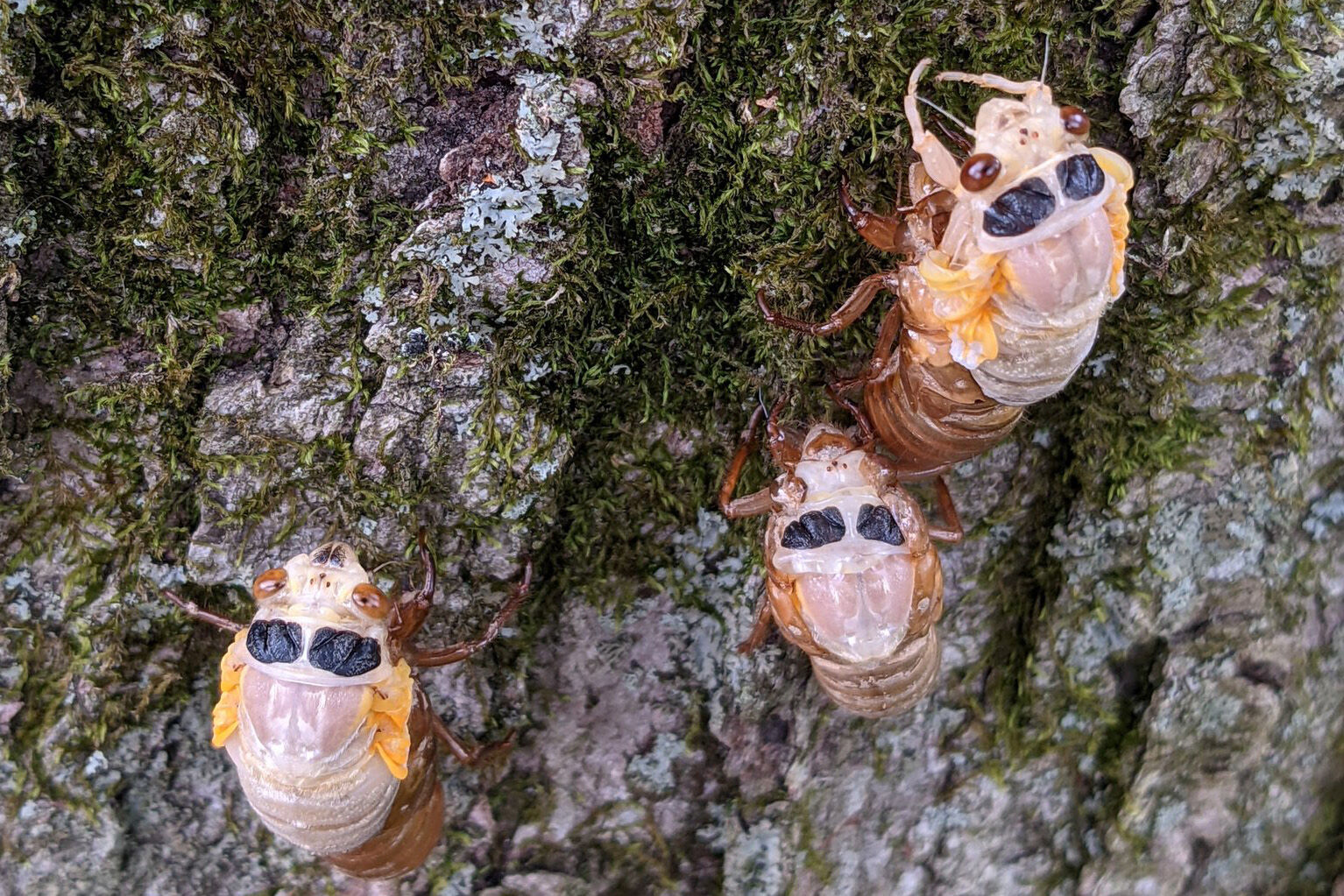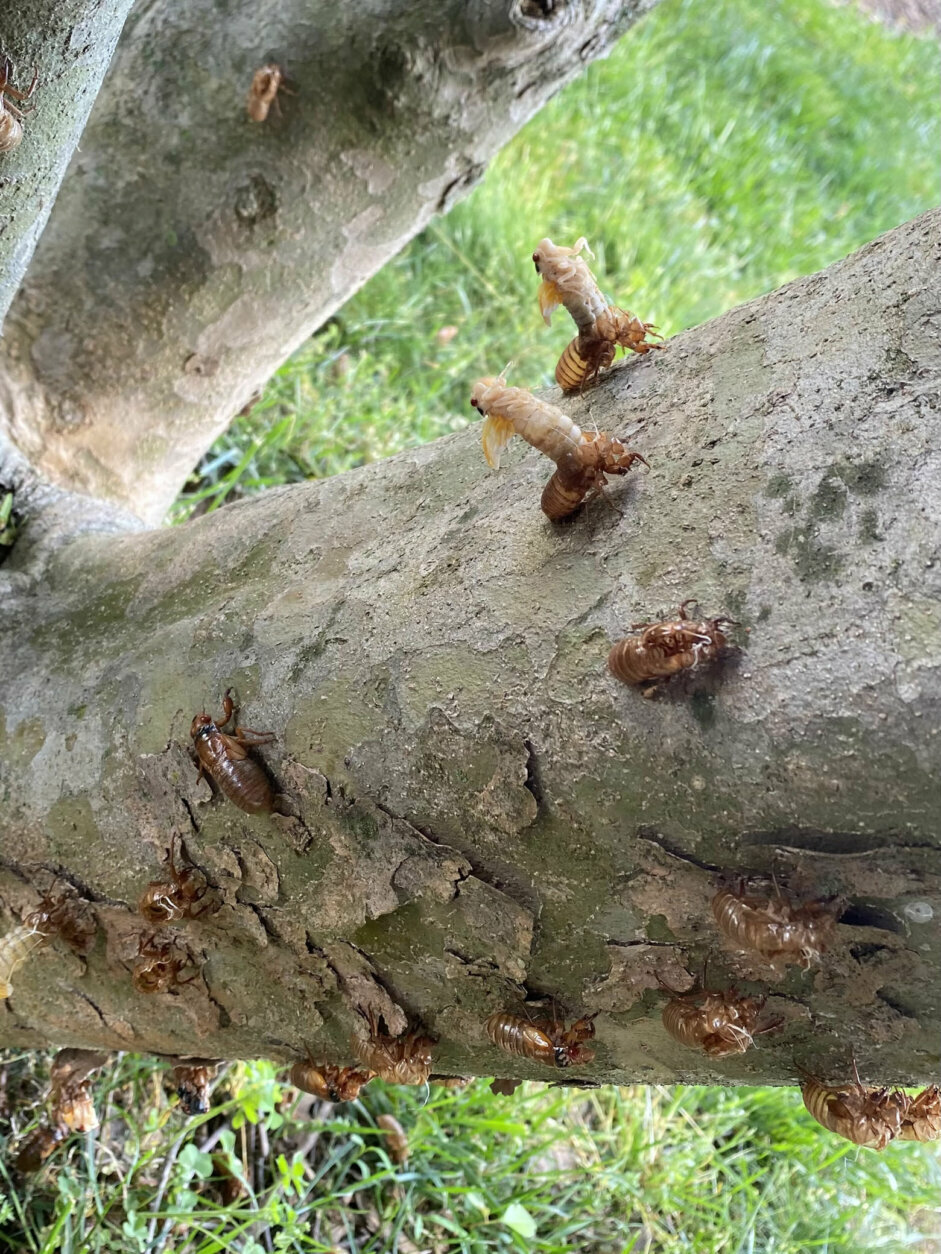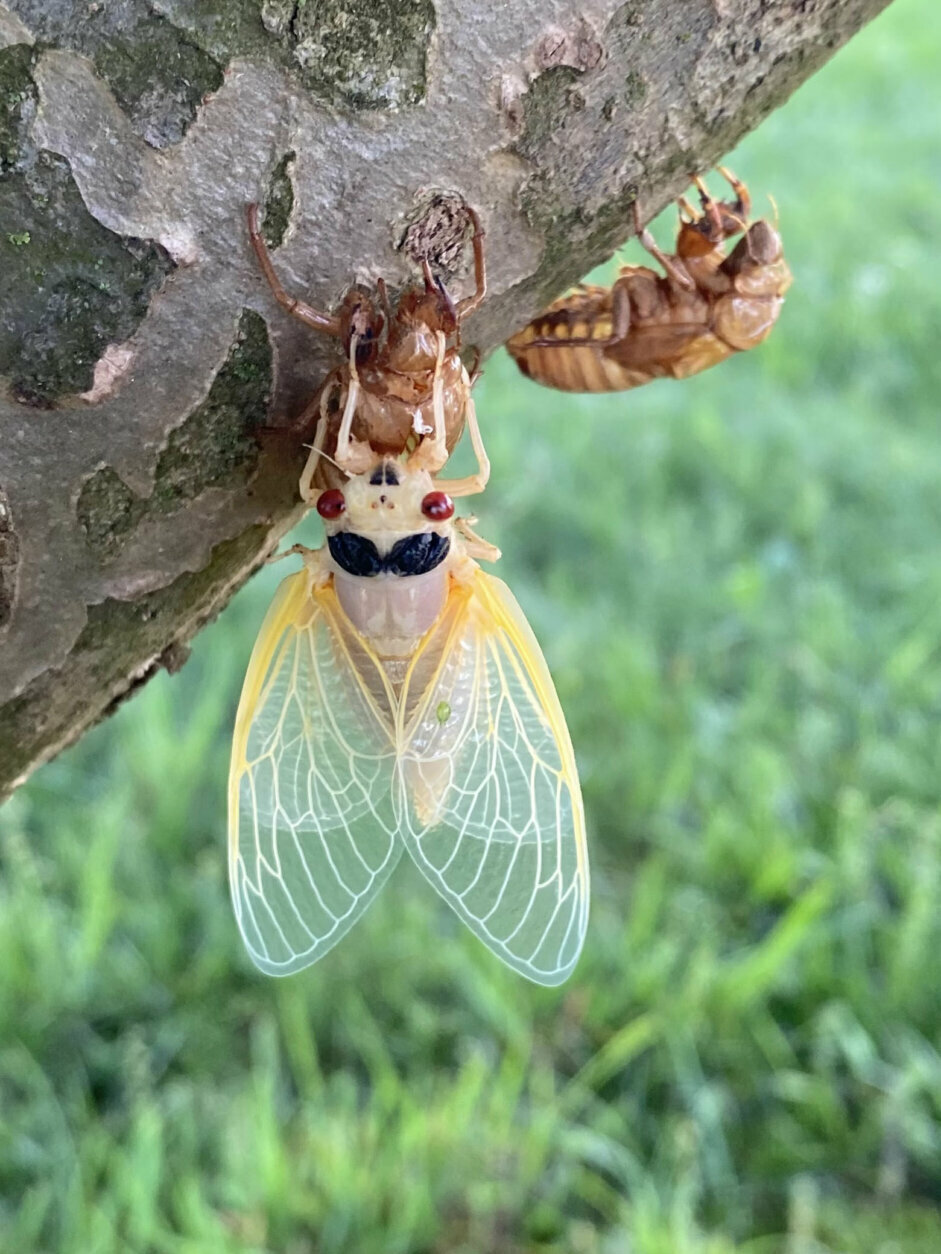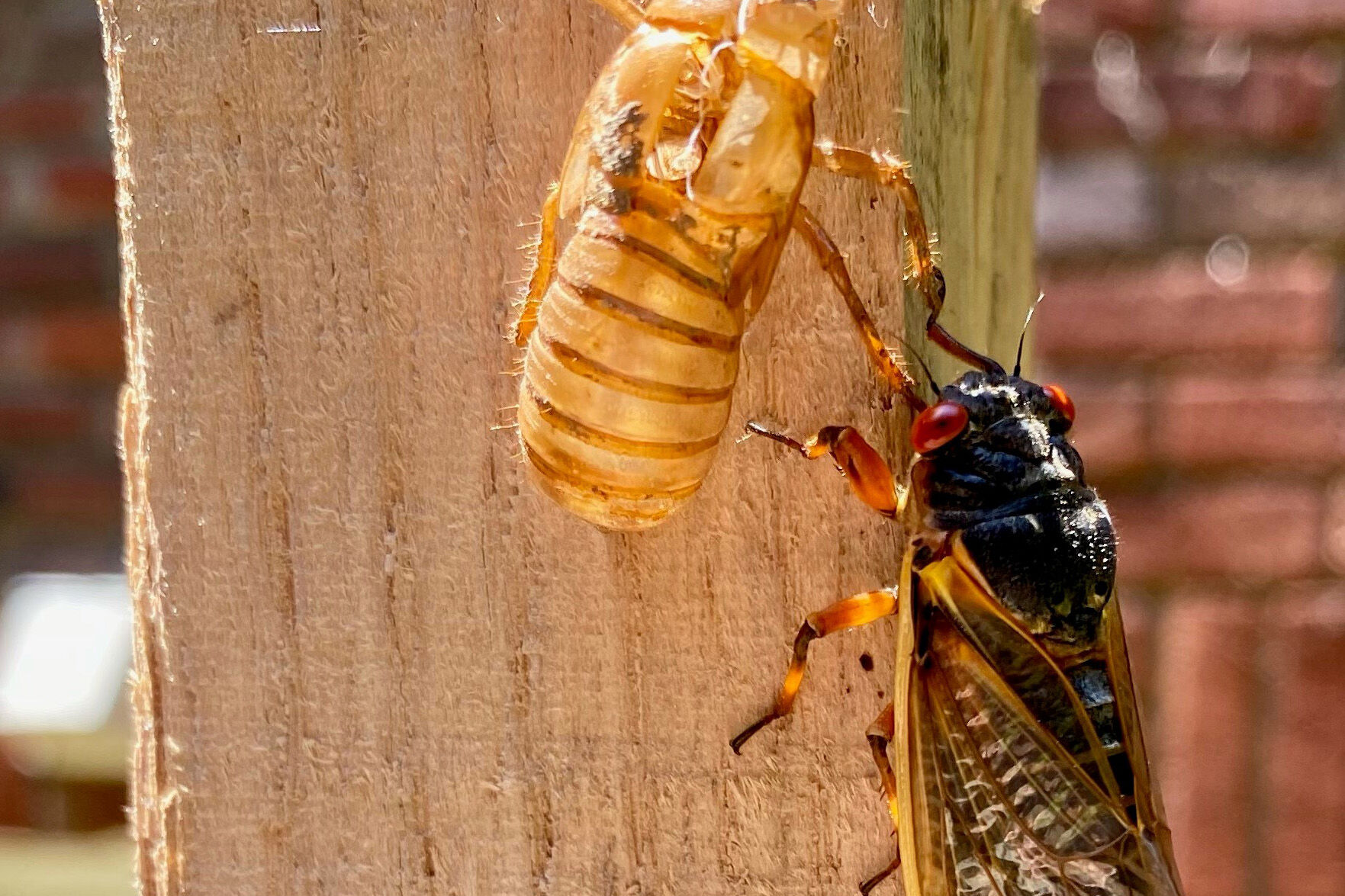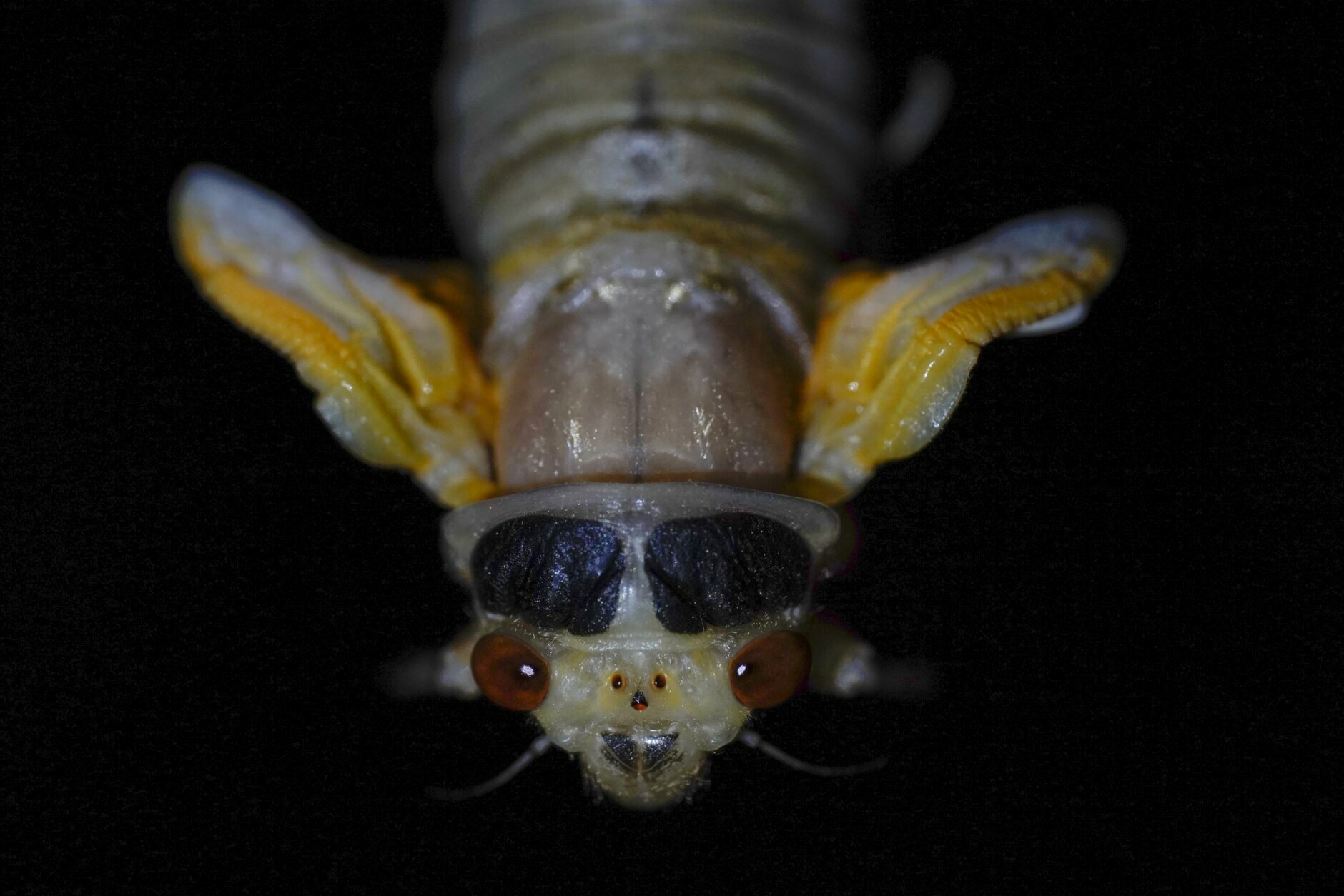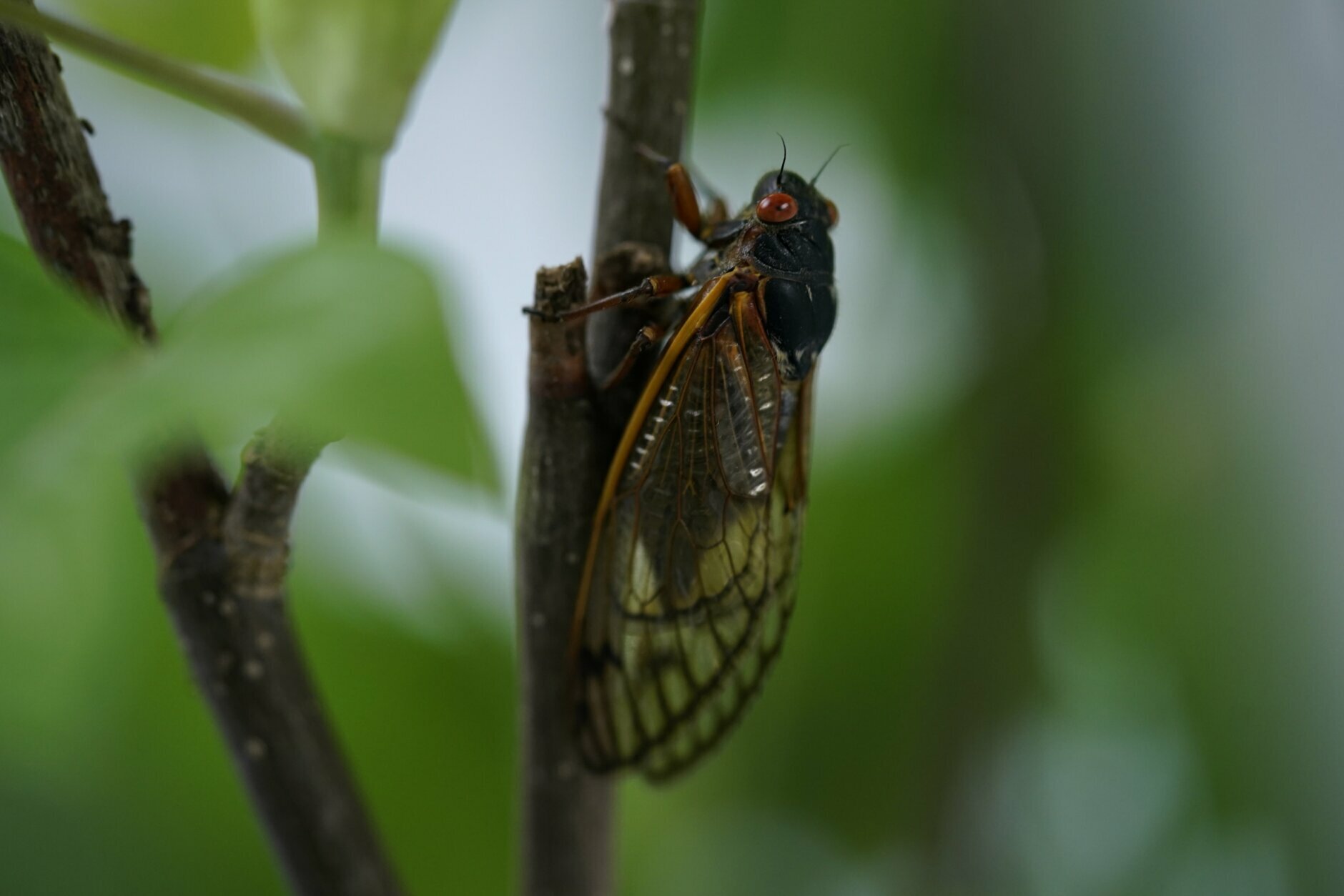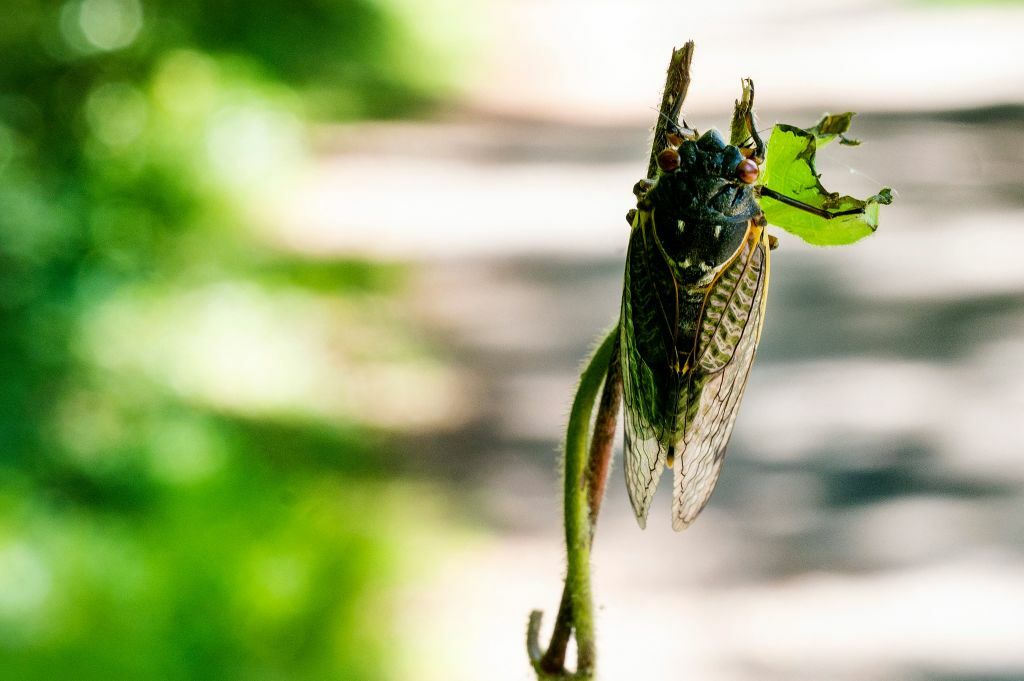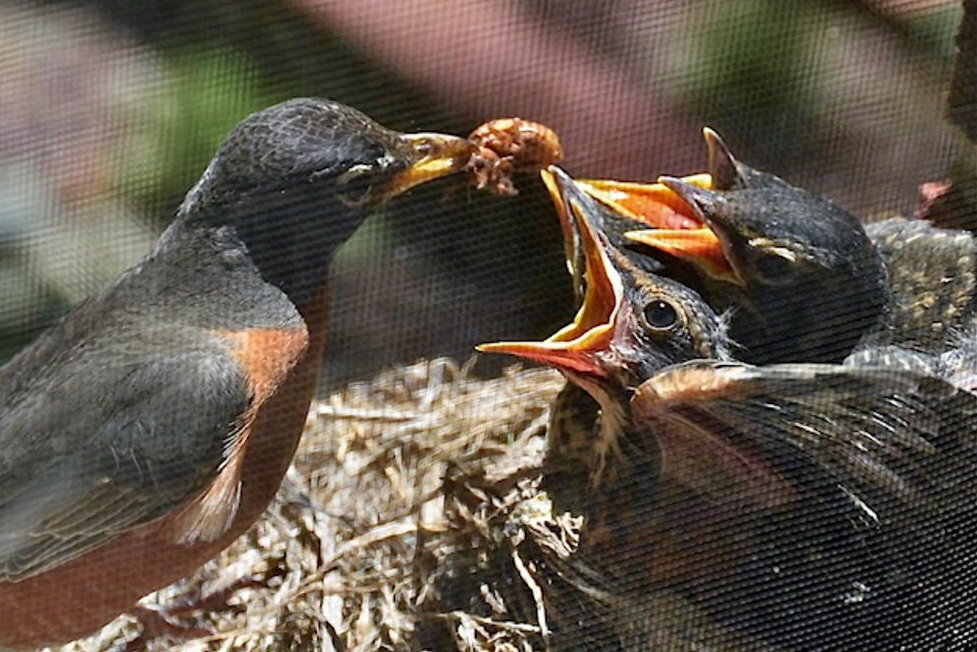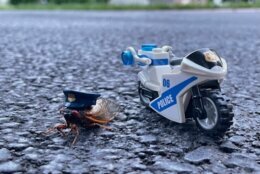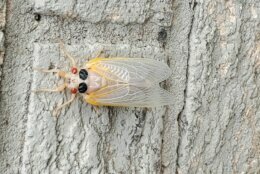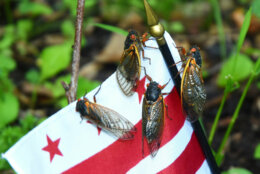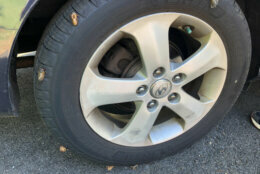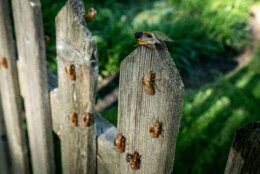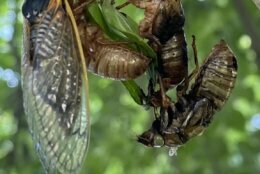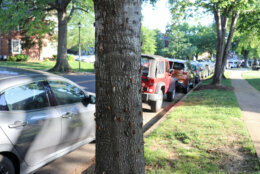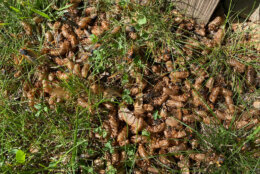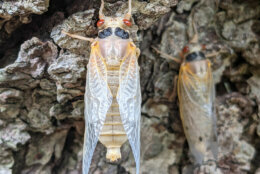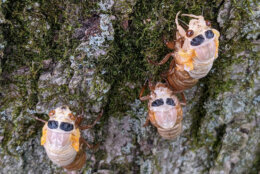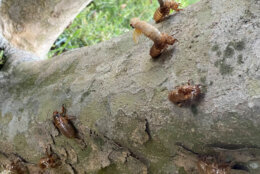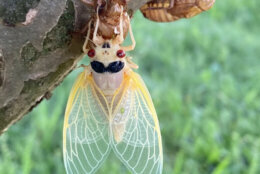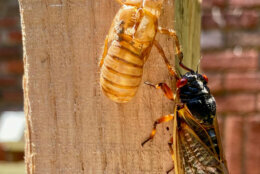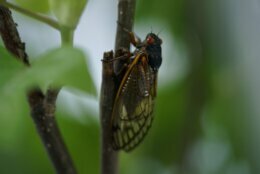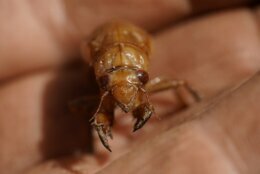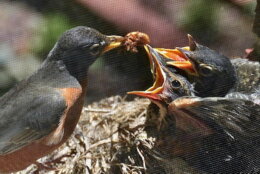The continuous hum of Brood X cicadas, perched in the branches of trees, is coming to end, replaced by piles of insect carcasses and the smell of, well, dead cicadas.
“Rotten, but not forgotten,” said Eric Day, an entomologist at Virginia Tech. “Their short time above ground is coming to an end — they’ve done what they’re supposed to do.”
The life cycle of cicadas is a fascinating one, Day said — 17 years underground, four to six weeks above ground.
“In that four to six weeks above ground they’re mating, laying eggs in twigs. Those eggs will hatch in July,” said Day. “Then the nymphs, almost smaller than a rice grain, will drop to the ground, and burrow into the soil.”
Underground, the nymphs will have a long time before the next appearance of Brood X, in 2038.
“They’ll attach themselves to the root of a tree, and there they will remain — feeding, developing, and growing, for the next 17 years,” said Day.
And the adults will just rot — which is part of nature.
“It is a return of nutrients,” Day said. “Even though they smell bad, it is good for the trees and the like.”
For those tending flowers, fruits and vegetables: “It wouldn’t hurt if you want to rake them up and put them in your garden — free fertilizer!”
Or, you could just leave the carcasses where they fall, which will likely be around the trees in which they mated.
“They’re gonna dry out somewhat, so you will probably will be seeing those cicada carcasses pretty much the rest of the summer,” said Day. “But the smell is going to go away fairly quick — maybe a couple of weeks.”
While homeowners can either repurpose the mounds of cicada carcasses or leave them alone, Day said they’ll want to clean out rain gutters and other home systems.
“For an area with a really big emergence, and a lot of them flying around, you definitely want to check drains to make sure they’re not getting plugged up by the cicadas,” he said.
Cicadas pilled up in my gutters until I cleaned them out. You may want to check your gutters, if you haven’t cleaned them this Spring. #cicadas #BroodX @scottbroom @WUSA9 @abaskerville10 @SteveSosnaNBC @augensteinWTOP @TenaciousTopper @cicada @cicada_guy pic.twitter.com/VvQiiI9nfz
— Jeff Herge (@JeffHerge) June 16, 2021










